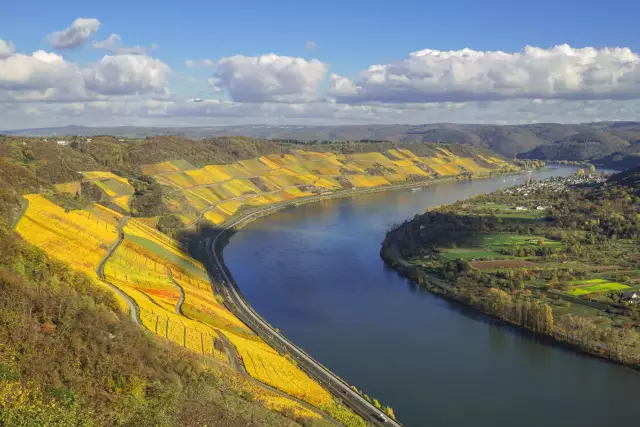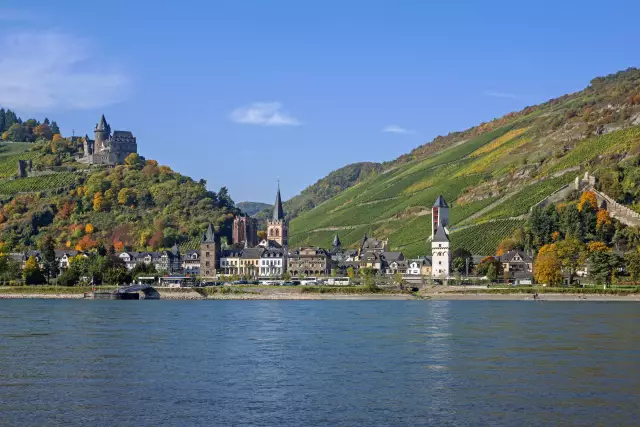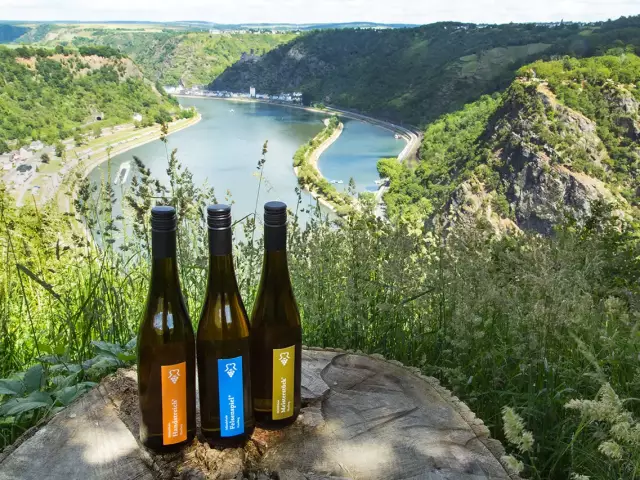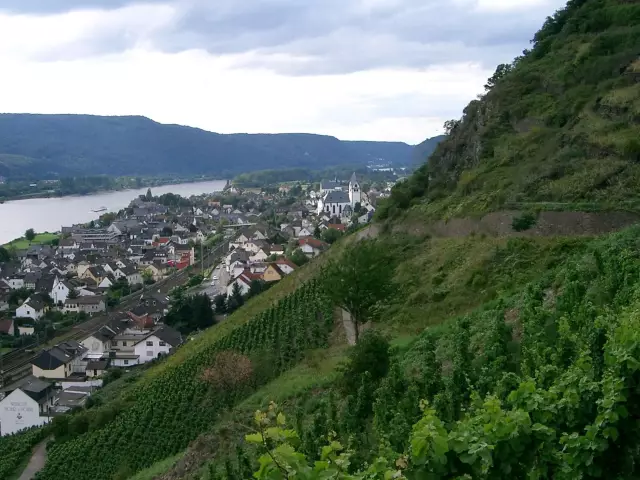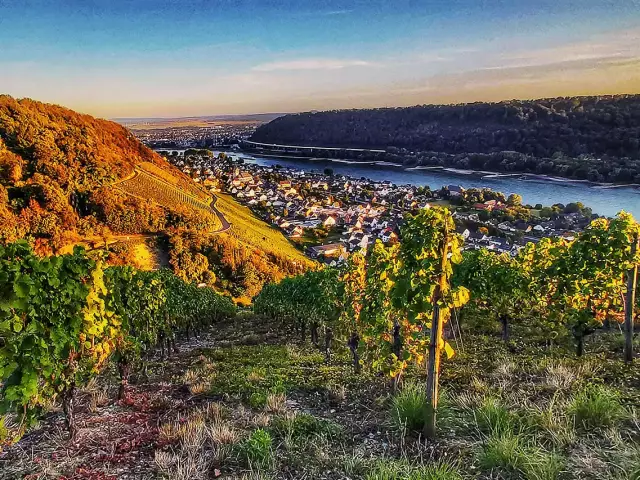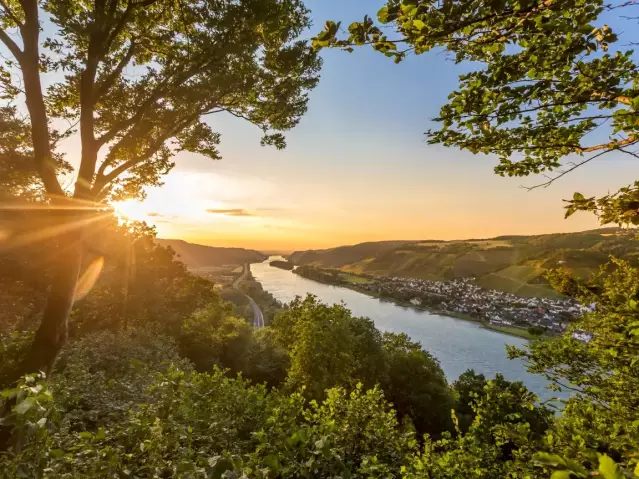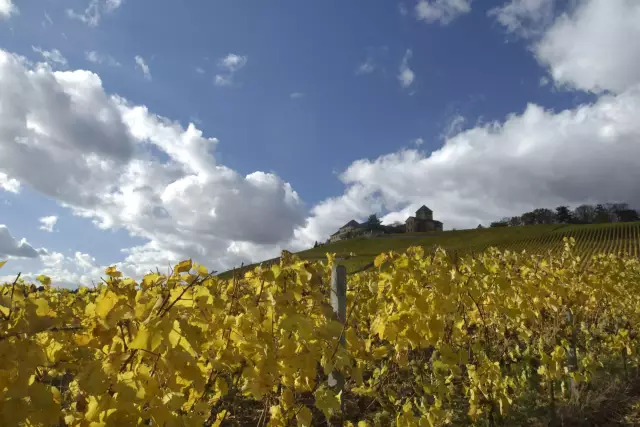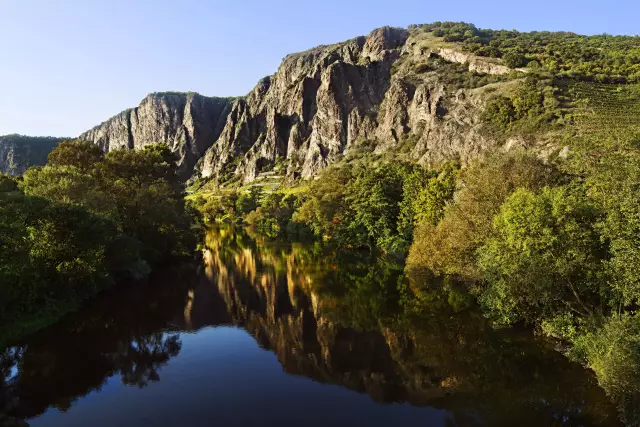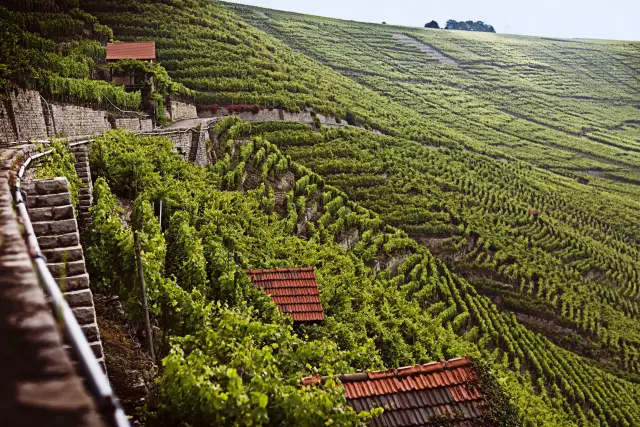Mittelrhein
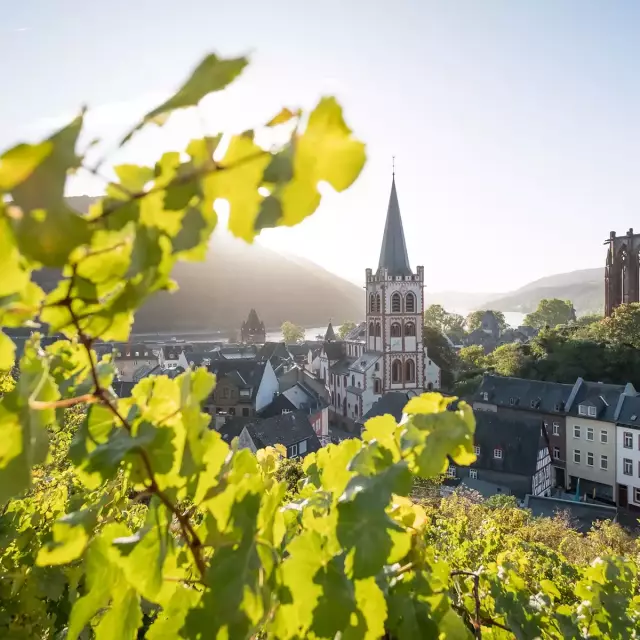
The Rhine Valley between Bingen and Bonn offers a picturesque backdrop. Vineyards crowned by castles and medieval towns adorn the banks of the Rhine.
Facts
-
460 ha
Vineyard area
-
111
single vineyards
Mittelrhein - Riesling and Romance
The Mittelrhein is a beautiful region of steep, terraced vineyards and some of the wine world's most spectacular scenery - medieval castles and ruins clinging to rocky peaks, sites of ancient legends where Siegfried, Hagen and the Loreley seem to spring to life. This wine-growing region where the Romans planted the first vineyards, stretches over 100 kilometers from Bingen to the gates of Bonn.
The narrow Rhine valley, framed by countless rugged ridges, is an impressive landscape and extremely challenging for winemakers who scale the vertiginous steep slopes to tend their vines. The southern part of this unique cultural landscape, the Upper Middle Rhine Valley, was declared a World Heritage Site by UNESCO in 2002. It is the heart of the cultivation area, with castles on the slopes and medieval-looking villages on the river bends. Bopparder Hamm has the largest contiguous vineyard area in the Middle Rhine with a length of five kilometers. Every year at the end of April you can enjoy the new vintage releases at the Mittelrhein Weinfrühling (wine in the spring) festival and of course take in those stunning views.
On the Mittelrhein you can experience pure Rhine romance with the legendary Loreley rock, numerous awe-inspiring castles and old castle ruins and in the historic villages and towns where there is hardly an alley without a tavern or wine shop. Selected restaurants have been awarded the ‘Haus der besten Schoppen Mittelrhein’ praising their excellence as a place to eat and drink.
Vineyards are almost exclusively on terraced steep slopes. Due to the difficult cultivation conditions, the growing area has decreased to 466 hectares. The Siebengebirge and the Loreley divide this area into two. To increase the quality, the winegrowers only harvest an average of 60 hl per hectare. The barren clay slate soils in the steep slopes, the temperature-compensating water surface of the Rhine and the low yield are the foundation for the top quality of the wines of Mittelrhein.
The vintners favor the classic grape varieties. Riesling particularly thrives here, producing mineral wines with fine aromas and racy acidity. With 64 percent of the acreage, it is the most prolific, followed by Müller-Thurgau, Pinot Gris and Pinot Blanc. The most important red grape variety is Pinot Noir.
The touring destinations are numerous. In the heart of this unique river landscape is Koblenz, one of the largest wine-growing cities. St. Goar, Boppard and Oberwesel, with its almost completely preserved city wall, are also highlights as is the picturesque old wine trade center of Bacharach.
There are many wine festivals all year round as well as wine presentations and open days. In June at Tal to Tal, the streets are blocked for car-free pleasure. At Rhein in Flammen in July the whole valley is lit with fireworks. The Weinforum Mittelrhein in September is a wonderful opportunity to taste from around 100 award-winning wines.
Overview Mittelrhein
Geographical location: The 65km-stretch of the Middle Rhine Valley between Bonn and Bingen known as "the Rhine Gorge"
Major town(s): Koblenz, Boppard, Oberwesel, Bacharach, Bingen
Climate: The steep hillsides of the valley protect the vines from cold winds and there is ample sunshine. The Rhine serves as a large, heat-reflecting surface.
Soil types: Primarily clayish slate and greywacke
Vineyard area 2022: 466 ha · 2 districts · 11 collective vineyard sites · 100+ individual sites
Grape varieties 2022 [white 85% · red 15%]: Riesling (63.9%), Spätburgunder (10.3%), Weißburgunder (4.9%), Müller-Thurgau (4.5%)
Marketing: About one quarter of the region's wine is produced by seven cooperative cellars. As in the Ahr, nearly all of the wine is consumed by locals or is sold to tourists.
Signposted routes through wine country: The routes B-9 and B-42 (driving) run on either side of and parallel to the Rhine. There are two hillside routes (driving) that offer views: the Rheingoldstraße through the Hunsrück Hills, from Rhens to Niederheimbach, and the Loreley-Burgenstraße through the Taunus Hills, from Kaub to the Loreley and from St. Goarshausen to Kamp-Bornhofen. Two signposed trails (hiking) on either side of the Rhine are the Weinwanderweg, between St. Goar and Trechtingshausen, and the Rhein-Wein-Wanderweg, between Kaub and Kamp-Bornhofen.
Varietals

Quotes
Highlights of wine culture in Mittelrhein
-
Highlight Home of Bacchus - Bacharach Old Wine Trading Centre of Bacharach: Home of Roman god Bacchus
Learn more
Winesights
Wine hike Climb Above the Rhine
In all areas of human activity there are sectors that are so demanding that they are commonly referred to as "supreme disciplines".
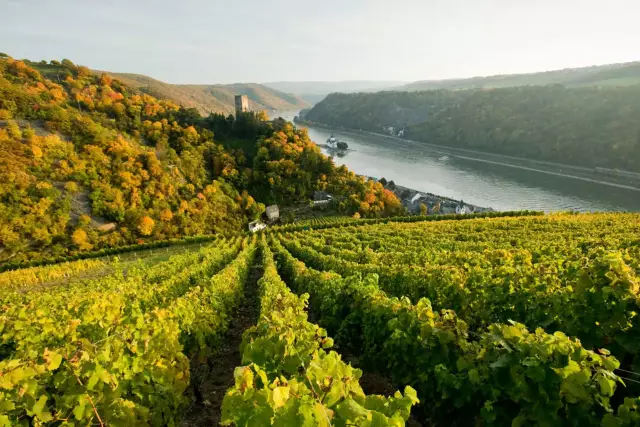
Contact
-
Mittelrhein-Wein e.V.
56346 Sankt Goarshausen- Dolkstraße 19 Rheinland-Pfalz Germany


